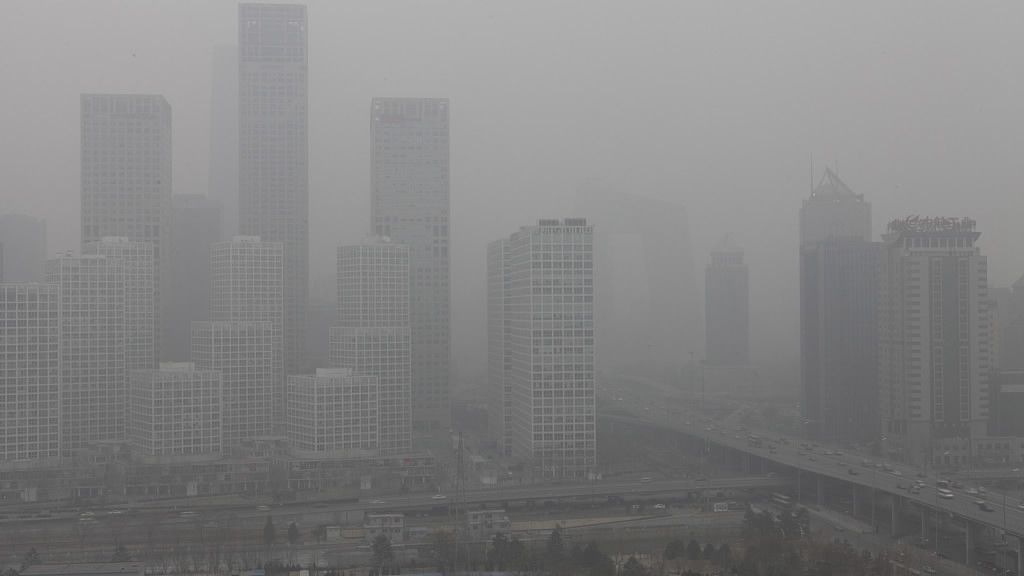
Health
21:16, 17-Oct-2017
Mothers’ exposure to air pollution can affect children

Compared to babies whose mothers breathe cleaner air, women who breathe polluted air during pregnancy have babies with greater signs of “aging” in their cells when they’re born, a new study finds.
Babies with higher exposure to fine particle pollution during gestation had shorter caps on the ends of their chromosomes, according to the researchers, who suggest the findings offer a possible biological reason for health problems encountered by kids who live where smog and traffic exhaust are pervasive.
The protective chromosome caps known as telomeres normally shrink with age, and are also thought to erode with extreme stress.
“Reducing exposure to air pollution is a good thing, for both the parents and for the unborn baby,” said Pam Factor-Litvak, author of an accompanying editorial and a public health researcher at Columbia University in New York.
“Prenatal exposure to air pollution is associated with a host of adverse outcomes,” Factor-Litvak said by email.
For the study, Tim Nawrot of Hasselt University in Diepenbeek, Belgium, and colleagues examined telomere length from samples of cord blood and placental tissue for 641 newborns in the Flanders region. They also looked at mothers’ exposure to pollutants known as PM 2.5, a mixture of solid particles and liquid droplets smaller than 2.5 micrometers in diameter that can include dust, dirt, soot and smoke and are often found in traffic exhaust.

VCG Photo
VCG Photo
Some previous research has linked exposure to traffic fumes and air pollution to higher odds of infertility as well as an increased risk of delivering underweight or premature babies. Prior research has also linked shorter telomeres to an increased risk of a variety of chronic health problems in adults, including heart disease and cancer.
Telomeres shorten each time a cell divides. Once telomeres are too short, cell growth stops, which is why their length is considered a potential indicator of cellular aging and overall health.
In the current study, Nawrot’s team examined data on women who had full-term babies from 2010 to 2014.
Researchers used mothers’ home addresses to estimate average exposure to PM 2.5 during each week of pregnancy.
Overall, the women’s average weekly exposure to PM 2.5 was 13.4 micrograms per cubic meter of air (ug/m3).
Mothers exposed to higher levels of PM 2.5 gave birth to babies with shorter telomeres, researchers report in JAMA Pediatrics.
Each increase of 5 ug/m3 in PM 2.5 exposure during pregnancy was associated with roughly 9 percent shorter telomeres in babies’ cord blood on average, and 13 percent shorter telomeres in placenta samples, the study found.

VCG Photo
VCG Photo
The researchers accounted for other maternal factors like education, income, health conditions and smoking history, as well as the babies’ sex and weight at birth.
One limitation of the study is that women’s actual PM 2.5 exposure might differ from what researchers estimated based on home addresses, the authors note. It’s also possible that the babies’ parents had shorter telomeres and this influenced the telomere length in newborns.
Even so, the findings suggest that it’s possible for air pollution to cross the placenta barrier and directly affect the chromosomes in babies, said Mark Nieuwenhuijsen, a researcher at the Center for Research in Environmental Epidemiology and the Barcelona Institute for Global Health in Spain.
“We know that air pollution reduces the birth weight of babies and may reduce gestational age and head circumference, but we did not know about biological aging during pregnancy,” Nieuwenhuijsen, who wasn’t involved in the study, said by email. “I believe this is the first study looking at this and shows that aging due to air pollution starts already during pregnancy.”
As much as possible, people should avoid breathing smog and traffic fumes, said Dr. Shruthi Mahalingaiah, a researcher at Boston University School of Medicine who wasn’t involved in the study.
“The take home message is to limit exposure to air pollution when you can - if you bike to work during rush hour - consider biking during other times to reduce exposures to vehicular exhaust,” Mahalingaiah said by email. “If you live in areas of the world with high levels of ambient air pollution, you may consider installing appropriate air/ventilation systems so that your in-home air quality is excellent.”
Source(s): Reuters

SITEMAP
Copyright © 2018 CGTN. Beijing ICP prepared NO.16065310-3
Copyright © 2018 CGTN. Beijing ICP prepared NO.16065310-3